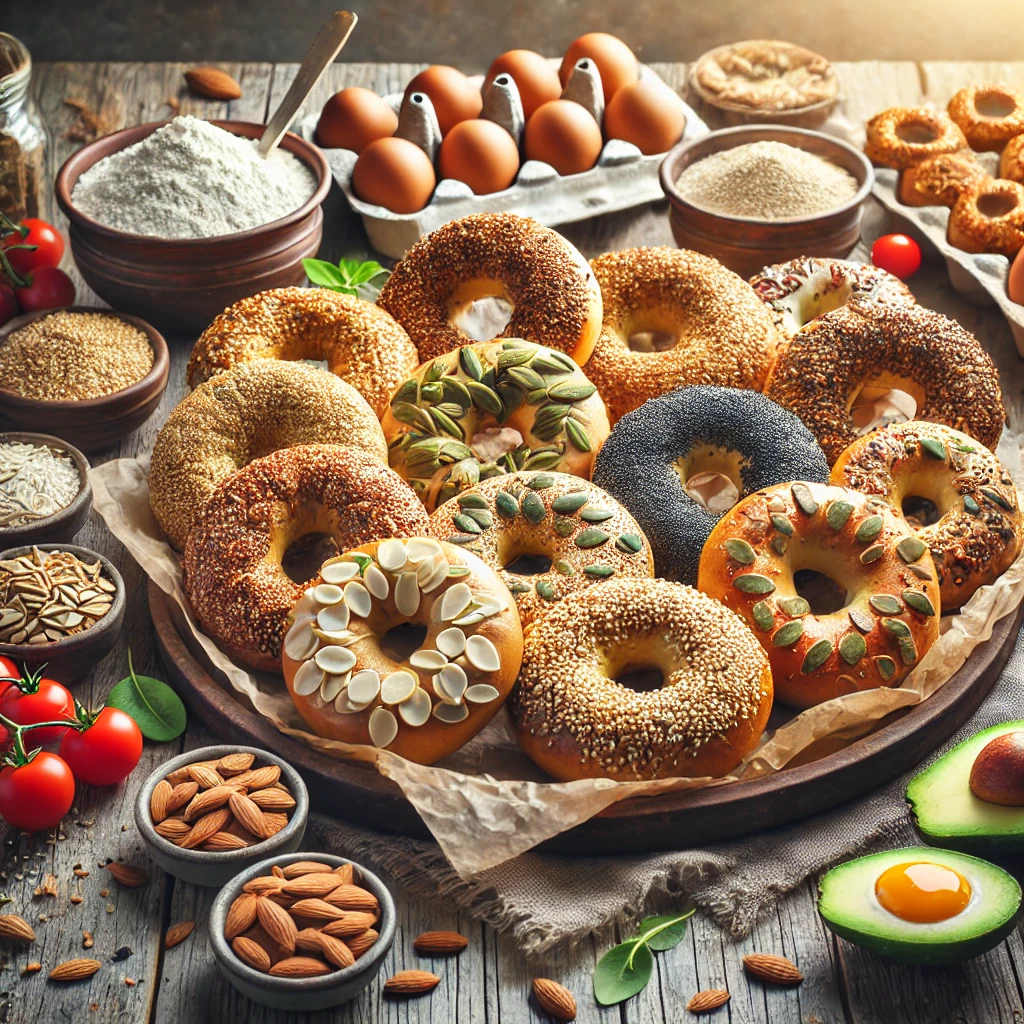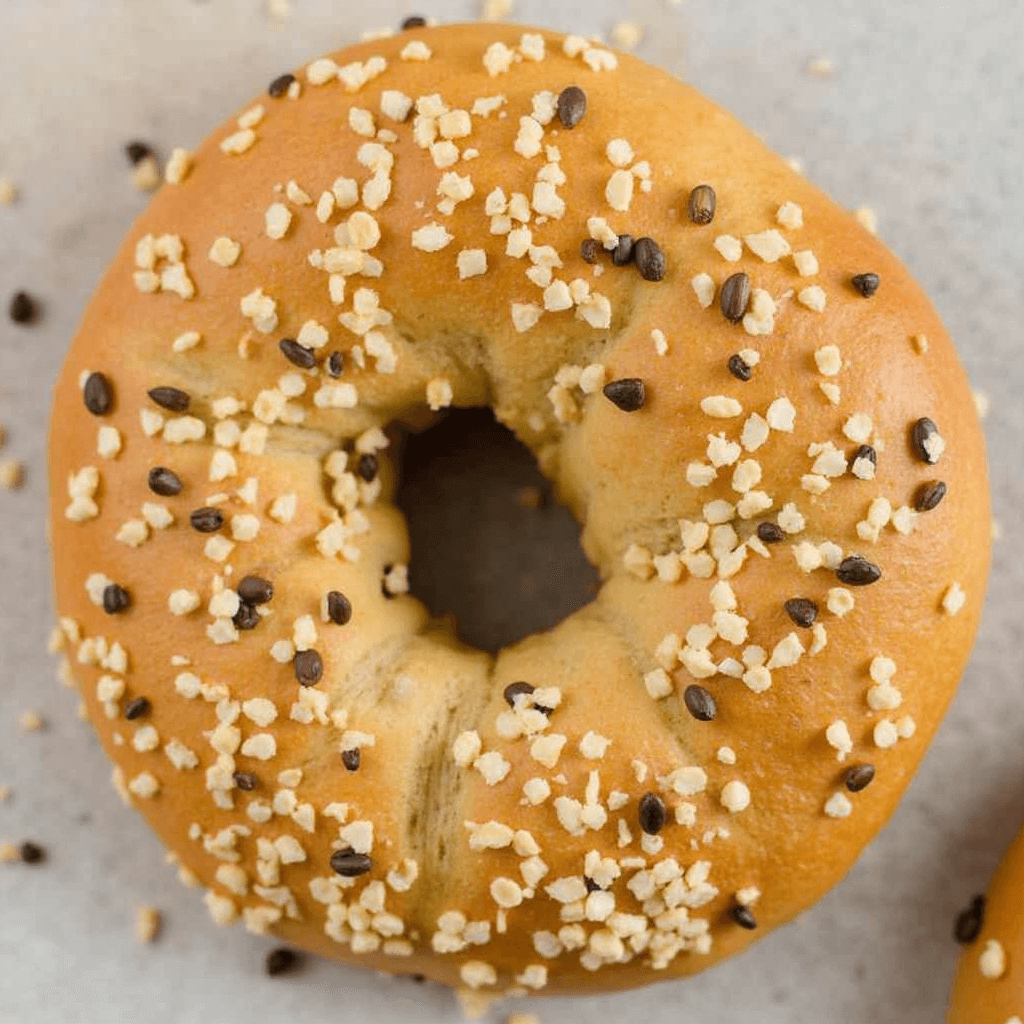Imagine starting your day with a bagel so soft, flavorful, and satisfying that it feels like a warm hug. Now imagine this bagel is gluten-free. For years, finding gluten-free bagels that don’t taste like cardboard or crumble at the first bite seemed impossible. But times have changed. Today, gluten-free bagels have become the hero breakfast option for millions of people, offering delicious solutions to those who avoid gluten for health reasons or personal choice.
Whether you’re searching for better-tasting gluten-free bagels, exploring homemade recipes, or looking to stock up on the best brands, we’ve got you covered. By the end of this article, you’ll know exactly why these bagels are worth craving and how to incorporate them into your life.

Why Gluten-Free Bagels Are Taking Over Breakfast Tables
The Growing Popularity of Gluten-Free Foods
Over the past decade, the demand for gluten-free foods has skyrocketed. According to recent statistics, the global gluten-free market is projected to grow by over 9% annually, reaching $9 billion in the next few years. While some people avoid gluten due to medical conditions like celiac disease or gluten intolerance, others opt for gluten-free options as part of a cleaner eating lifestyle.
Gluten-free bagels, in particular, have captured attention because they bring a sense of comfort and normalcy to breakfast for those who otherwise feel limited in their choices.
Health Benefits of Going Gluten-Free
For individuals with celiac disease or gluten sensitivity, eating gluten-free is a necessity, not a trend. However, even those without medical conditions often feel lighter and more energized when they reduce or eliminate gluten. Gluten-free bagels can also be more nutrient-dense when made with wholesome ingredients like almond flour or flaxseed, offering a healthy twist on a classic favorite.
What Sets These Gluten-Free Bagels Apart
Perfect Texture and Flavor
One of the biggest challenges with gluten-free baking is getting the texture just right. Gluten is responsible for the elasticity and chewiness in traditional baked goods. Without it, products can often feel dry or crumbly. Today’s gluten-free bagels have overcome this hurdle, offering a soft, chewy texture that’s nearly indistinguishable from their gluten-filled counterparts.
Flavor is another key area where gluten-free bagels shine. Whether you love the simplicity of a plain bagel or the boldness of an everything bagel, gluten-free options now cater to every palate.
Nutritious and Allergen-Friendly
Most gluten-free bagels are made with nutrient-dense ingredients like almond flour, tapioca starch, and chia seeds. These ingredients not only mimic the texture of traditional bagels but also provide additional health benefits, such as omega-3s, fiber, and protein. Plus, many gluten-free bagels are free of other common allergens like soy and dairy, making them an inclusive option for a wide range of diets.
Made for Everyone
The beauty of gluten-free bagels is their universal appeal. They’re perfect for those with celiac disease, people with gluten intolerance, and even those who simply want to try something new. Many gluten-eaters are pleasantly surprised to find that gluten-free bagels offer the same satisfaction without the heaviness that often comes with gluten-rich products.
How to Make the Best Gluten-Free Bagels at Home
There’s something special about making your own bagels. Not only do you control the ingredients, but the process itself can be therapeutic. Here’s a foolproof recipe for creating gluten-free bagels that taste bakery-fresh.
Easy Recipe for Homemade Gluten-Free Bagels
Ingredients
| Ingredient | Quantity | Notes |
|---|---|---|
| Gluten-Free Flour | 2 cups | Choose a high-quality blend. |
| Baking Powder | 2 tsp | For the perfect rise. |
| Greek Yogurt | 1 cup | Adds richness and moisture. |
| Eggs | 1 large | Helps bind the dough. |
| Salt | 1 tsp | Balances flavor. |
| Optional Toppings | As desired | Sesame seeds, poppy seeds, etc. |
Instructions
- Preheat your oven to 375°F (190°C) and line a baking sheet with parchment paper.
- In a large mixing bowl, combine gluten-free flour, baking powder, and salt.
- Add Greek yogurt and the egg, mixing until a soft dough forms.
- Divide the dough into equal portions and shape each into a bagel.
- Brush the bagels with egg wash and sprinkle your favorite toppings.
- Bake for 20-25 minutes, or until golden brown. Allow them to cool before serving.
Pro Tips
- For a more authentic bagel texture, briefly boil the shaped bagels in water before baking.
- Experiment with mix-ins like blueberries, cinnamon, or shredded cheese.
- Use xanthan gum in your dough to mimic the elasticity of gluten.
For more Bagels recipes click here, and for more gluten-free click here
Where to Buy the Best Gluten-Free Bagels
If baking isn’t your thing, don’t worry. There are plenty of ready-made gluten-free bagels that deliver on both taste and texture.
Top Brands to Try
- Udi’s: A household name in gluten-free baking, known for their soft and chewy bagels.
- Canyon Bakehouse: Offers a variety of flavors, including plain, everything, and cinnamon raisin.
- Local Bakeries: Many artisan bakeries now offer gluten-free bagels that are freshly made and preservative-free.
What to Look For
- Ingredients: Opt for bagels with simple, wholesome ingredients.
- Texture: Check reviews to ensure the bagels have the right chewiness.
- Nutrition: Look for options with added protein or fiber for a more balanced meal.
Pairing Ideas for Gluten-Free Bagels
Bagels aren’t just for breakfast—they can be the star of any meal. Here are some creative ways to enjoy them.
Breakfast Options
- Classic cream cheese with a twist: add smoked salmon and capers for a luxurious treat.
- Sweet and satisfying: top your bagel with peanut butter and banana slices.
Lunch & Snack Ideas
- Create a hearty sandwich with turkey, avocado, and sprouts.
- Spread hummus on your bagel and pile on roasted vegetables for a Mediterranean-inspired snack.
Frequently Asked Questions (FAQs)
Are gluten-free bagels healthier than regular bagels?
It depends on the ingredients. Many gluten-free bagels are made with nutrient-dense flours like almond or chickpea flour, offering more protein and fiber compared to traditional bagels made with refined white flour.
Can I freeze gluten-free bagels?
Absolutely! To keep them fresh, slice the bagels first and store them in an airtight container. When you’re ready to enjoy one, simply pop it in the toaster.
Why are gluten-free bagels more expensive?
The cost comes down to the ingredients. Gluten-free flours and additives like xanthan gum are more expensive than traditional wheat flour. Smaller production scales for specialty products also contribute to higher prices.
Do gluten-free bagels taste the same as regular bagels?
Modern recipes have come a long way. Today’s gluten-free bagels often taste just as good—if not better—than their traditional counterparts. Many people can’t tell the difference!
Conclusion: The Gluten-Free Bagel Revolution
Gone are the days when gluten-free bagels were dense, flavorless, or dry. With innovations in recipes and baking techniques, these bagels are now a delicious and satisfying option for everyone. Whether you make them at home, grab a pack from your favorite brand, or explore creative ways to enjoy them, gluten-free bagels are here to revolutionize your mornings.
So why wait? Try a gluten-free bagel today and discover what everyone is craving.

